How to Clean Upholstered Furniture to Keep It Looking Spotless
Use these upholstery cleaning tips to easily remove stains, prevent wear, and clear pet hair from your furniture.
Upholstered furniture can take a lot of wear and tear. Even if you and your family are extra careful, accidents, from a spilled glass of wine to muddy paw prints, are just a part of life. The best way to prevent stains on your furniture, including sofas, chairs, benches, ottomans, and other fabric-covered pieces, isn't to ban food and pets from the living room altogether—you just need to know what to do when stains happen. If you work fast, clean upholstery regularly, and know your fabric, you can handle spills, stains, and other mishaps with ease. Whether you're tackling a tough stain or removing unsightly pet hair, these cleaning tips will help keep your furniture looking pristine for years to come.
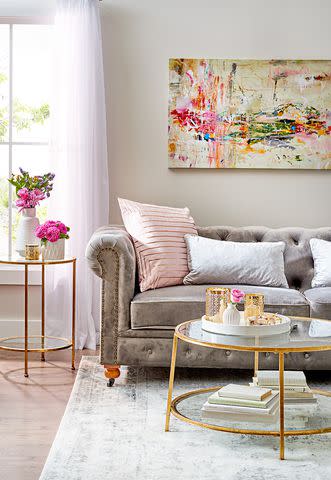
Vacuum Upholstered Furniture Often
Our number one cleaning tip is to vacuum your upholstered furniture often. Dirt not only affects the appearance of your furniture, it can also wear away fabric fibers. Use a clean, dry upholstery attachment, or any stiff-bristle brush, to loosen dried dirt and debris. Use the crevice tool for hard-to-reach nooks and crannies.
Use Baby Wipes to Clean Furniture
Baby wipes are surprisingly effective for quick DIY upholstery cleaning (although you should always test first on an inconspicuous area to make sure they won't damage the fabric). Great for leather, cotton, or polyester, these wipes offer a gentle mixture of water and soap with very little moisture. Keep a travel pack stashed in the living room for instant spot removal whenever spills happen. Baby wipes are also ideal for spot-cleaning rugs. Act quickly on coffee drips and other spills, and the stain will be out before it even has time to set.
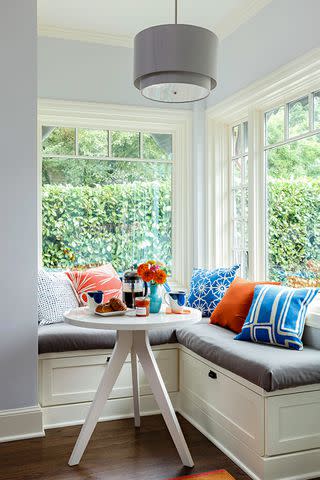
Clean Upholstery According to Codes
Refer to the manufacturer's instructions and fabric cleaning code for the best way to clean upholstered furniture. "W" means you can use water, so you can remove the cushion covers and launder them according to the instructions. "S" means to use a non water-based solvent, such as alcohol. Spray it on lightly, then blot with a clean with a white cloth or sponge. "S/W" means you're OK using either solvents or water, and "X" means use neither and vacuum only.
Prevent Stains on Upholstered Furniture
If your furniture doesn't come pretreated with a fabric protector to repel stains, apply one yourself (or have an expert do it for you). If it's already treated, ask the manufacturer how long it will last. "Many of the treatments on the market must be reapplied every few years to retain their stain-fighting powers," says Melissa Homer, chief cleaning officer of MaidPro. Keeping it treated is key to maximizing the life of your furniture, she says.
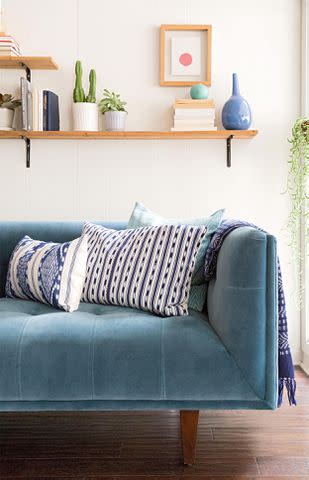
Clean Upholstered Furniture Gently
Don't scrub upholstered furniture, even when you're dealing with tough, set-in stains. Scrubbing could grind the stain further into the fibers or damage the fabric. It's better to let the stain remover sink in and set, then gently blot it away. Use a soft, microfiber cloth for blotting, not a coarse fabric or a bristled brush. If the fibers are stiff after cleaning and drying, use a soft brush to loosen the material.
Use Water Sparingly
"Many people believe that the more moisture you use, the better," says Ron Holt, CEO of Two Maids cleaning service. "This is not always true." Try a specially formulated solvent (water-free) spot remover first. Many upholstery sprays are inexpensive and work well on most stains. If you move on to a water-based approach, Holt says, use it sparingly.
Remove Pet Hair from Upholstered Furniture
If your furry friends like to cozy up on the couch with you, try these tips for cleaning. To remove pet hair, put on a pair of rubber gloves and run them over your furniture, says Leslie Reichert of Green Cleaning Coach. "The gloves create static that pulls the hair off to the edge of the piece, where you can easily vacuum it off," she says. You can also create your own static spray by mixing water and a small amount of fabric softener. Spray the solution on the furniture and wipe off the hair with a cloth. Other effective tools for removing fur from upholstery include furniture brushes and hand vacuums designed for pet hair.
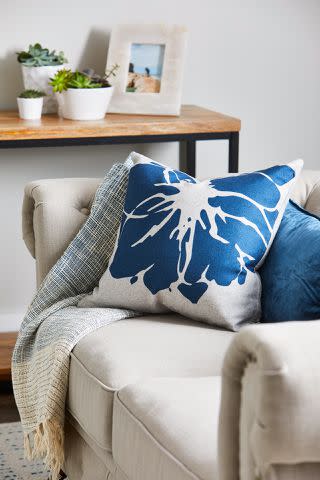
Clean Throw Blankets and Pillows
When you're cleaning your furniture, don't forget to wash your throw blankets and throw pillows. If you use a washing machine, it's generally best to stick with the gentle cycle on cold. If the pillow covers are removable, throw them in the machine inside out. Be sure to dry pillows thoroughly, as inner dampness can lead to mold. If you're not sure your pillows are washable, freshen them with a spritz of water spiked with your favorite essential oil, followed by a tumble in the dryer with a couple of tennis balls.
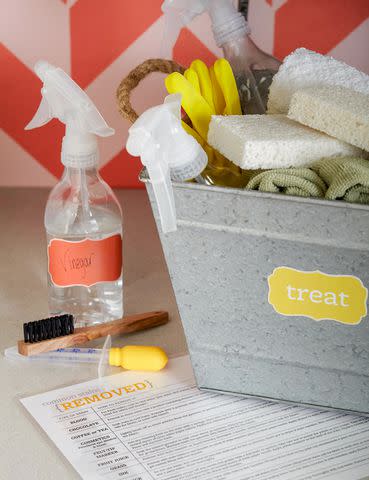
DIY Spot Removers for Upholstery Stains
The sooner you treat a spot, the better your chances are of removing it. If you catch it right away, you might be able to get away with simply blotting with a microfiber cloth, says Kenny Schultz of MyClean cleaning service. If water is safe to use on your upholstery fabric, there are many DIY upholstery cleaning tactics you can try. To reduce the risk of spreading a stain, vacuum before attempting removal, and always test first in an inconspicuous spot. Try these tricks to remove stains from upholstered furniture:
General upholstery stain removal: Start with club soda. Dab it on gently with a clean, white cloth. Two more easy options: a little vinegar (left to sit for about 15 minutes before blotting with clear water) or a solution of mild dish soap and water.
Grease or oil stains: Sprinkle with salt, let sit, then dab with soap and water. Alternatively, try rubbing alcohol instead of salt.
Coffee stains: Blot in a mixture of equal parts water and vinegar with a little dish detergent.
Crayon stains: Work in a dab of non-gel toothpaste, then rinse with clear water.
Blood stains: Blot with hydrogen peroxide, then water.
Red wine stains: Sprinkle with salt. Blot with hydrogen peroxide or lemon juice, then rinse by blotting with water.
false
